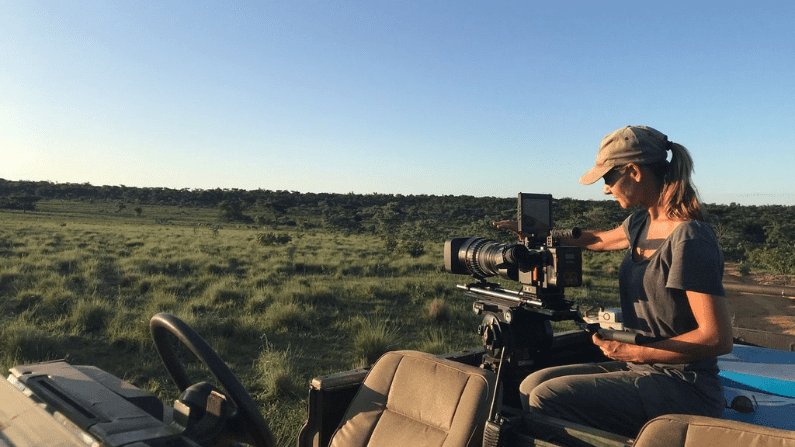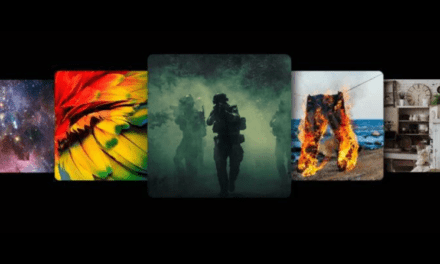Wildlife filmmakers Avalon Media rely on Cartoni tripods to capture the action
Stalking big cats and spending months out in the African bush is more than a workday; it’s a lifestyle for the husband-and-wife filmmaking team at Avalon Media Africa. Cissy and Werner Maritz founded their production company in 2016. Based in the heart of the South African Bushveld, a sub-tropical woodland ecoregion of Southern Africa which includes Kruger National Park, one of the largest reserves in the country. The pair have made a name for themselves for their stunning filmmaking and ability to understand wildlife behavior. Their work has appeared on PBS, Nat Geo, Discovery, Animal Planet & DirecTV.
Despite the harsh conditions in which they work, the pair invested in Cartoni’s lineup of cinema fluid heads – the Maxima 40 for their filmmaking. We caught up with the filmmakers to learn more about their work and how they use their production equipment to capture these critical moments.
Q: Tell me a little about yourself. How long have you been into wildlife, and how long have you lived in Africa?
Cissy: My interest in wildlife has always been there, as long as I can remember. I was born in the Netherlands, far from the exciting African bush. For my internship, it wasn’t a hard choice to decide not to stay in Europe and go to the wildest of the wild – Africa. I was in South Africa for my degree for six months and fell in love with the continent. I finished up my studies and went straight back.
Werner: I was born in South Africa and spent the first couple of years of my life, living in the Caprivi Strip. At that time, the area was still extremely wild. We had wild animals next to our home and we grew up with wildlife all around us. Growing up all over Africa, my passion for wildlife was deeply ingrained into every part of whom I am today. Spending time in nature between wild animals is where I feel most home and at peace.

Spending time in nature between wild animals is where I feel most home and at peace.
I have been filming wildlife documentaries for international broadcasters and clients all over the world for the last 13 years. But it has also taken me to some very interesting places searching for wildlife stories. I spent 1.5 years filming European wildlife in cities like Amsterdam and many small villages around Europe. This was quite interesting to see how wildlife can adapt to city life, but the structure stays the same. Like in Amsterdam you still had your migration patterns and areas where different animals hunt and gather. It was like the city was transformed into the wild African plains.
Q: In terms of wildlife, your showreel shows a lot of big cats, is that your specialty?
https://www.avalonmediaafrica.com/showreel
Werner: I love big cats, especially lions. They are super lazy, and hours can turn into days very quickly just waiting for lions to hunt or do something! They are masters in saving energy! But there’s, to me at least, no other animal that is so exciting to film when they do something. When you are in the presence of a pride of lions or a nomadic lion by himself, you can feel their presence. They just demand respect.
Lions are also the only social big cat. I believe their social dynamics have made them so much more relatable. When you spend time with them, you start to know their personalities and individual quirks.
Q: What does it take to get those very close-up shots.
Cissy: Firstly, most animals in Africa are used to (tourist) vehicles and ignore them (or actually use them to stalk prey), so we can get pretty close to the subjects. But besides this, we normally spend weeks with the animals, staying with them throughout the day, so they know us, and we know them. If they start walking, often we know exactly what their path is going to be and we set the shot up so they walk straight to camera. So it’s mainly know your animal and predict what he/she is going to do.
Werner: As Cissy mentioned, animal behavior is the most important. We need to study where they are going to walk or what path the animal is going to take when hunting. This comes with spending years with animals and putting yourself in their minds.
All of this will not be possible if we don’t have the right gear. We use long lenses. This not only brings us closer to the animals but also lets us keep our distance. Our presence should not change their natural behavi

What does it take to get those very close-up shots.
or, and the only way to do this is to keep our distance and give them their space so that they are comfortable. And last, lots of time and patience.
Q: Talk to me about why you bought the Maxima 40?
Cissy: In our part of the industry, Cartoni is not a widely used brand. I will just say this, I was very positively surprised by it once we started shooting!
Werner: I was looking for a head that can do it all. We shoot with very long lenses, 100mm way up to 1500mm. We needed something that could handle the weight and be very stable. When filming with a lens at 1500mm, if the head and your setup is not right the image picks up your heartbeat via your fingertips. This can ruin an amazing shot, and trust me, when you are filming big cats hunting, your heart starts pumping a little bit faster. The Maxima 40 has also proven to be extremely smooth in panning and tilting with no backups on a start or stop of a pan or tilt. It just goes where you point it with extreme smoothness.

Maxima Tripod
We also needed something reliable, robust, that can handle Africa.
The Maxima 40 has served us extremely well. It is super smooth, can handle the weight and during the 2.5 years out in the African bush, it has handled all the elements extremely well. Shooting in rain, dust, extreme heat, extreme cold. It has been a real beast out in the field and it has never missed a beat.
Our other issue was also that we can’t always clean it properly every day. You try to keep all the gear as clean as possible but when filming out in Africa, you have the head-mounted on an open vehicle bouncing around on the African plains while getting covered with dust. Well, the Cartoni Maxima has taken this in its stride. The head is also very quick to balance and operate. We don’t have the luxury of time out in the field. We need to get the camera up on the head, balanced, and ready to shoot in a couple of seconds, or we can miss the shots. The way the Maxima works is just fantastic: smooth, fast, and just a pleasure to work with.
Q: What kind of setups do you use it in?
Cissy: We have mainly used the Maxima 40 mounted on the vehicle out in the bush. We were a bit worried at first about how it would hold on in the long term because our usual conditions are harsh. Once mounted, we do not take the head off. Its stays on while driving around in wind, rain, dust, extreme heat etc. One of our longest projects was 5 months and this head stayed on the film vehicle (without a roof or any protection) the whole time. Still as good as new (minus some scratches from thorn bushes and some bleaching from the sun).
Our set up 90% of the time with the Maxima 40 is a Red Gemini + a Canon CN20 (50 -1000mm). The only vibration we get is from the car moving and winds, but the Maxima 40 seems to do its job perfectly. When mounted on the tripod on the ground with the CN20 it’s dead steady – even on the long end.
Werner: The Cartoni Maxima 40 is our A cam setup in wildlife the main camera is normally a long lens setup. It has proven over the years to be a real winner out in the field. We use this head mainly vehicle-mounted, I do not want to carry this head around for too long. It is a beast but that is also what makes it so stable. We have other smaller heads we use when off the vehicle and on foot. But this is the smoothest head I have ever worked with.
Q: Over the years, have you seen any growing trend in wildlife filmmaking
Werner: There are a couple of trends growing in the wildlife industry. If we are talking filming, yes gimbals, drones, trap cameras are being used more and more. But the long lens is still the king of wildlife filming.
I think that the biggest trend I have noticed is in storytelling, there are many different ways of telling the same story but as time has changed and our audience is also changing and we as filmmakers have to find new ways of telling stories. Showcasing wildlife documentaries in a way to let’s say a drama series, where you have characters, and there is a bigger dramatic story to be told looks like this attracts the younger generation. It is also more exciting in my eyes, these animals have such amazing stories and real-life drama. There is action, drama, comedy, betrayal, love, tenderness, loss everything that makes a great story. We just need to showcase it in a more dramatic way than what we did in the past.








